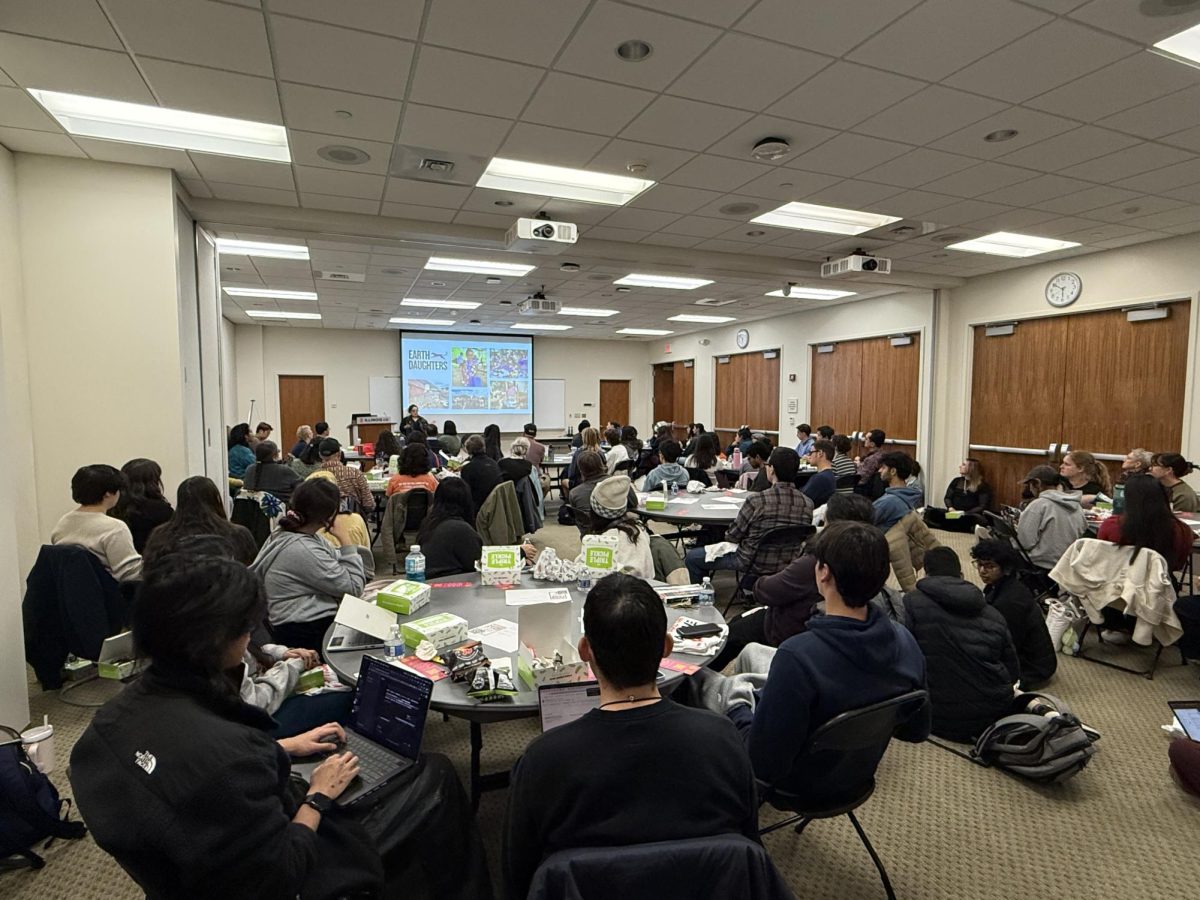The University opened an exhibit in the Rare Book and Manuscript Library to celebrate the 75th anniversary of the publication of Gwendolyn Brooks’ Pulitzer Prize-winning poetry novel, “Annie Allen.”
The exhibit “‘We Are Each Other’s Harvest’: Gwendolyn Brooks and the Formation of Black Literary Canon” contains letters received by Brooks, collections of her writing and several first-edition anthologies on Black literature. The exhibit will be on display in the RBML through May 2025.
RBML acquired a large collection of Brooks’ works and personal effects in 2013, and since then, the team has worked tirelessly to catalog and make the collection available to the public.
Dana Miller, visiting archives and literary manuscript specialist, said they hope to complete processing within the next few months.
“A lot of hands have touched the collection, so it’s kind of exciting for us to finally be able to say this is finally processed,” Miller said.
Get The Daily Illini in your inbox!
The curators planned out the exhibit months in advance, having to choose only a handful of pieces from the extensive collection to tell the story of Brooks’ accomplishments and their impact contained within six cases.
Caroline Szylowicz, Kolb-Proust librarian and co-curator of the exhibit, said the hardest part was narrowing down such a large collection into a small exhibition.
“The challenge is how, out of this mass of materials, to distill a narrative that is told through a limited prescribed medium,” Szylowicz said. “Out of these hundreds of boxes worth of materials, you could distill many, many, many different stories.”
The curators explored several ideas for the exhibition — beyond focusing on just Brooks’ work — to celebrate the rich history of Black poets and activists. Curator Cait Coker mentioned they ultimately decided to go with an amalgamation of several themes.
“We had several months of conversations in order to figure out how to pull this together, then we just ended up smooshing all of these together to come up with the final concept,” Coker said.
The first two exhibition cases tell the story of Brooks winning the Pulitzer Prize, displaying a first edition copy of “Annie Allen,” Brooks’ second poetry book published in 1949, a letter from her editor and the telegram informing her of the news, among other artifacts.
“It was significant because she was the first Black person in any category to win the Pulitzer Prize,” Miller said. “I know a lot of people say the first Black woman. No. She talks about it all the time — first Black person, not just woman.”
The next two cases show Brooks’ involvement and contribution to the poetry world, such as her career as the Illinois and U.S. poet-laureate and Library of Congress consultant. The cases contain photographs and paraphernalia from her career along with broadsides of some of her more famous poems like “We Real Cool.”
Finally, the last cases unpack Black American literary history in bibliography format, displaying several anthologies of Black writing from the 1800s to 1920s, including work by Phillis Wheatley, Langston Hughes, George Moses Horton and editor Elaine Locke.
Szylowicz said one of the hardest challenges of the exhibit is the limited ability to display books within the cases.
“You’re committed to one opening; you can’t turn pages behind glass,” Szylowicz said.
The exhibit contains other items as well, like the bust of Brooks sculpted by artist Sarah Miller. There are only three copies of the bust, one in the Chicago Public Library and the other in the National Portrait Gallery in Washington, D.C. The University was fortunate to acquire the bust from the artist’s home after her passing.
While the exhibit only showcases a handful of Brooks’ work, the RBML is teeming with papers kept safely in storage. Miller said she hopes the exhibit will spread awareness of their collection.
“An exhibit is always the tiniest, tippiest tip of an iceberg, and the point of the iceberg is that you can see it, and you have an idea of what’s there,” Coker said.








